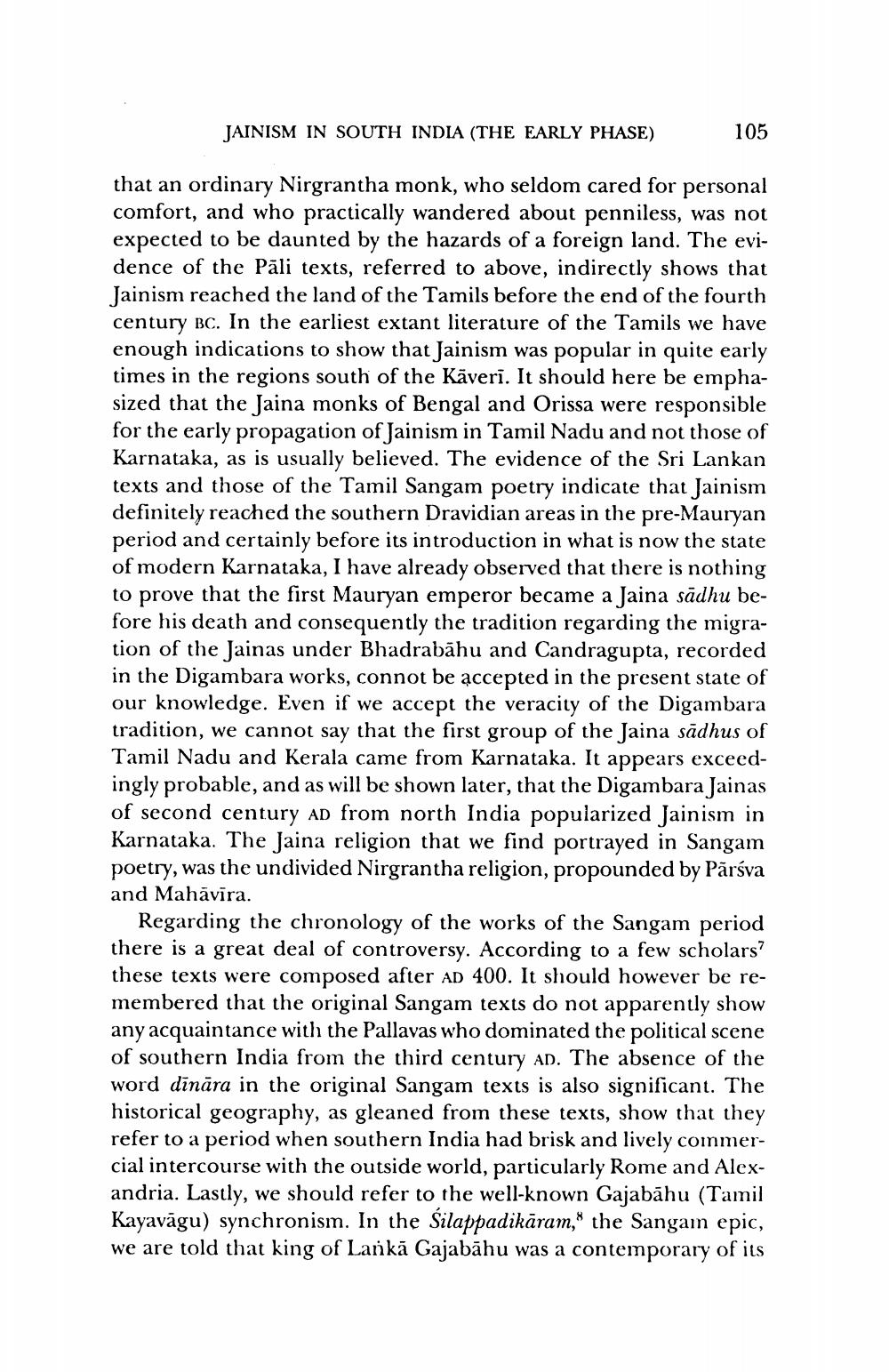________________
JAINISM IN SOUTH INDIA (THE EARLY PHASE)
105
that an ordinary Nirgrantha monk, who seldom cared for personal comfort, and who practically wandered about penniless, was not expected to be daunted by the hazards of a foreign land. The evidence of the Pāli texts, referred to above, indirectly shows that Jainism reached the land of the Tamils before the end of the fourth century BC. In the earliest extant literature of the Tamils we have enough indications to show that Jainism was popular in quite early times in the regions south of the Kaveri. It should here be emphasized that the faina monks of Bengal and Orissa were responsible for the early propagation of Jainism in Tamil Nadu and not those of Karnataka, as is usually believed. The evidence of the Sri Lankan texts and those of the Tamil Sangam poetry indicate that Jainism definitely reached the southern Dravidian areas in the pre-Mauryan period and certainly before its introduction in what is now the state of modern Karnataka, I have already observed that there is nothing to prove that the first Mauryan emperor became a Jaina sādhu before his death and consequently the tradition regarding the migration of the Jainas under Bhadrabāhu and Candragupta, recorded in the Digambara works, connot be accepted in the present state of our knowledge. Even if we accept the veracity of the Digambara tradition, we cannot say that the first group of the Jaina sādhus of Tamil Nadu and Kerala came from Karnataka. It appears exceedingly probable, and as will be shown later, that the Digambara Jainas of second century ad from north India popularized Jainism in Karnataka. The Jaina religion that we find portrayed in Sangam poetry, was the undivided Nirgrantha religion, propounded by Pārsva and Mahāvīra.
Regarding the chronology of the works of the Sangam period there is a great deal of controversy. According to a few scholars? these texts were composed after AD 400. It should however be remembered that the original Sangam texts do not apparently show any acquaintance with the Pallavas who dominated the political scene of southern India from the third century AD. The absence of the word dīnāra in the original Sangam texts is also significant. The historical geography, as gleaned from these texts, show that they refer to a period when southern India had brisk and lively commercial intercourse with the outside world, particularly Rome and Alexandria. Lastly, we should refer to the well-known Gajabāhu (Tamil Kayavāgu) synchronism. In the Silappadikāram,' the Sangam epic, we are told that king of Lankā Gajabāhu was a contemporary of its




